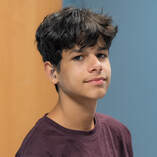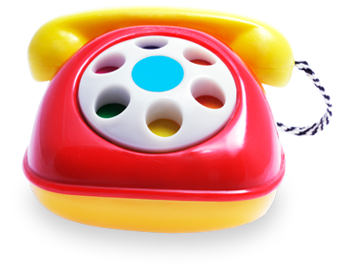Hearing testing is personalized for your child, based on what is developmentally appropriate and relevant to their symptoms. We provide a range of options so your little one is as comfortable as possible through testing and procedures. Some tests can be done while your child is asleep. If needed, we can offer mild sedation or general anesthesia to ensure we get the best results.
Newborn Hearing Screening
All babies born at Duke hospitals undergo a newborn hearing screening before they go home. If your child was born at a birthing center or at home, it’s important to have your baby’s hearing tested within the first month of life. The screening is quick, painless, and can be done while your baby is asleep or lying still.
- Automated Auditory Brainstem Response (AABR) Screen: Evaluates how well sound travels to the brain. AABR testing is ideal for newborns because it doesn’t require them to respond or indicate what they hear. Electrodes are placed on the baby’s skin and sounds are transmitted through headphones. The brain’s responses to those sounds are recorded by a computer.
Sometimes newborns can fail this initial screening for a reason like having fluid in their ears. It is very important that they receive follow-up testing as soon as possible (by the time they are three months old) to determine whether hearing loss is present. If so, early intervention is key to ensure your baby meets important communication and speech development milestones.
Hearing Loss Evaluation
If your baby failed initial newborn screenings or if there are concerns about hearing loss in an older child, we can perform a range of testing to discover the source and severity of hearing loss. All of these tests are painless and noninvasive.
- Diagnostic Auditory Brainstem Response (ABR) Testing: Helps determine the type and degree of hearing loss. It is commonly used as follow-up testing in infants who did not pass a newborn hearing screening, but it is also used for older children who are unable to participate in other types of hearing tests. Diagnostic ABR can be done during sleep for babies who are younger than three or four months old, or under sedation for older children. This test usually takes about two hours.
- Audiometry: Measures your child’s ability to hear a range of sounds necessary for speech understanding and development. Audiometry tests work best for children who are seven months and older. It helps determine the degree and type of hearing loss your child may have. Children are asked to turn their heads toward a sound or participate in a simple game. These tests usually take about 30 minutes.
- Immittance Testing: Assesses how well the eardrum and middle ear structures are working. A small, soft tip is placed in the ear canal to measure changes in ear pressure. This takes about five minutes.
- Otoacoustic Emission (OAE) Testing: Measures how well the inner ear (cochlea) is working. A small, soft plug is inserted into your child’s ear, and a series of tones and clicks are played. A computer records responses from the inner ear.
Auditory Processing Disorder Evaluation
If your child has trouble listening, misunderstands conversations, or has difficulty following instructions, our audiologists can administer tests to identify auditory processing disorder (APD). Children with APD may have normal hearing, but their brain incorrectly recognizes and processes sounds and words, especially in the presence of background noise.



